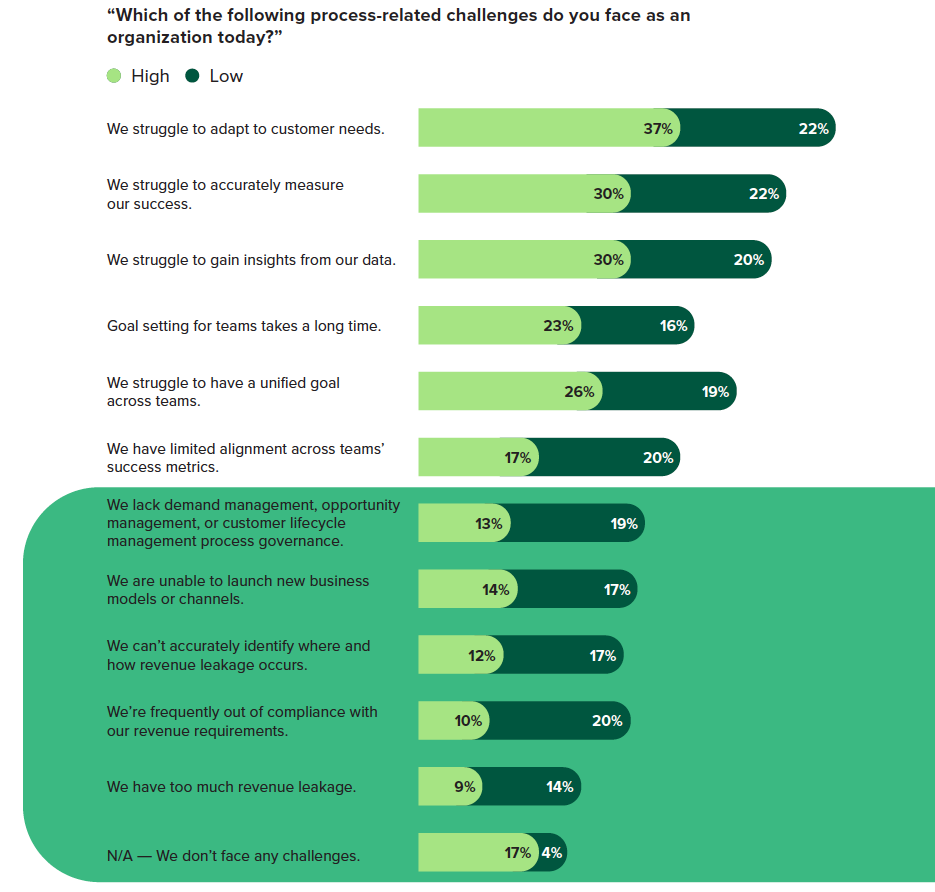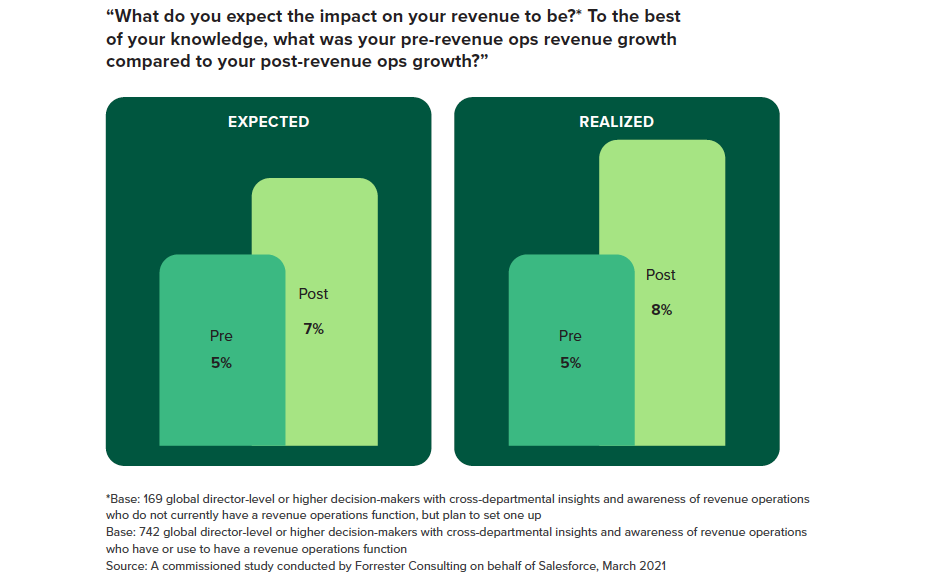
Elevating Business Performance with RevOps Automation
RevOps automation, when implemented using best practices, unifies sales, marketing, and customer success operations to boost revenue, streamline processes, and enable informed, strategic decision-making.
09 May

Revenue Operations, or RevOps, has rapidly gained traction as an integral part of modern businesses. At its core, RevOps is a unified approach that aligns sales, marketing, and customer success operations to drive revenue growth and improve the bottom line. It revolves around the consolidation of data, processes, and tools across these departments to foster better decision-making and strategic planning. A key enabler of successful RevOps is process automation, which streamlines operations, reduces error-prone manual processes, and frees up time for strategic activities.
Common RevOps Scenarios and the Power of Automation
Consider a common RevOps scenario: the sales forecasting process. Traditionally, sales teams would manually compile and analyze data from various sources, a time-consuming and error-prone process. With automation, this data can be consolidated and analyzed instantly, providing real-time, accurate forecasts. This not only optimizes time and resources but also empowers the team with reliable insights for informed decision-making.
Another scenario is customer data management. Without automation, customer data from different touchpoints are siloed, making it difficult to form a unified customer view. Automation can integrate these disparate data sources, enabling a 360-degree view of the customer, which is crucial for personalized marketing and sales strategies.
Five Best Practices for RevOps Automation
- Align Automation with Business Goals: Before implementing any automation, it’s crucial to align it with overall business goals. For instance, if a goal is to reduce the sales cycle, automating the lead qualification process could be a potential solution.
- Choose the Right Tools: According to Gartner’s 2022 Market Guide for Revenue Operations, selecting the right automation tools is critical. They should be versatile, user-friendly, and capable of integrating with existing systems.
- Iterative Approach: Start with automating simpler processes and gradually move to more complex ones. This approach, as noted in a report by Forrester, allows for testing, learning, and optimizing.
- Train Your Team: Automation tools are only as good as the people who use them. Regular training ensures that the team can fully leverage these tools to improve their efficiency.
- Regularly Review and Optimize: Automation isn’t a one-time process. Regular reviews ensure that the automation process is working as expected and identifies opportunities for optimization.
Assessing Readiness for Automation
To identify which sales and finance processes could benefit from automation, companies can ask themselves the following questions:
- Which tasks take up the most time and resources?
- Are there recurring errors in specific processes?
- Are there tasks that require input from multiple departments or systems?
- Are there delays in decision-making due to a lack of real-time data?
- Is there a lack of visibility into certain operations?
- Are customers experiencing delays due to manual processes?
- Are there any compliance risks associated with certain manual processes?

RevOps Automation Success Stories
There are several notable examples of companies that have successfully implemented RevOps automation and witnessed significant benefits:
Hubspot
HubSpot is a widely referenced example of RevOps success. The company implemented RevOps to break down silos between their sales, marketing, and customer service teams. They used their own CRM platform for automation, which helped to provide a unified view of the customer journey. This resulted in more coordinated efforts, faster decision-making, and an improved customer experience. Their approach to RevOps has been extensively documented in their RevOps blog.
Snowflake
Snowflake, a cloud-based data warehousing company, used RevOps automation to streamline their sales process. They implemented Clari, a Revenue Operations platform that uses AI to automate and improve forecasting and pipeline management. According to a Snowflake case study, this significantly improved their forecasting accuracy and helped them manage hyper-growth efficiently.
ZoomInfo
ZoomInfo is another company that has leveraged RevOps automation. They used LeanData’s Revenue Operations platform to automate lead routing, which was previously a time-consuming manual process. As reported in a LeanData case study, this led to a 30% increase in leads, a reduction in response times, and an increase in conversions.
These examples highlight how RevOps automation can significantly improve operational efficiency, decision-making, and ultimately, company performance. It’s important to note that the process of implementing RevOps automation involves careful planning, the right tools, and regular optimization to ensure the best outcomes.
Navigating the Path to RevOps Automation
Implementing RevOps automation is an investment that involves both direct costs and a variety of activities. Direct costs include the purchase of automation tools or platforms and the potential need to upgrade existing infrastructure to support these tools. Depending on the tools chosen, costs can range from a few hundred to several thousand dollars per month. In some cases, custom solutions might require hiring consultants or developers, further adding to the cost.
Activities associated with implementing RevOps automation can be extensive. They include mapping and analyzing current processes, defining automation goals, selecting and integrating the right tools, testing, training the team to use these tools, and continuously reviewing and optimizing the process. It’s also essential to consider the cost of change management, as organizational shifts might be required to break down silos between sales, marketing, and customer service teams.
Overall, while the upfront costs and effort can be significant, the long-term gains in efficiency, accuracy, and revenue growth can make RevOps automation a worthwhile investment. According to a study by McKinsey, companies that have successfully automated their processes have seen a return on investment often exceeding 20 percent.

Conclusion
RevOps represents a paradigm shift towards integrated and streamlined operations that can drive revenue growth. Automation plays a pivotal role in this, reducing manual labor, increasing efficiency, and providing timely insights. By aligning automation with business goals, choosing the right tools, adopting an iterative approach, training the team, and regularly reviewing and optimizing the process, businesses can harness the power of RevOps automation. As they assess their readiness for automation, they must consider the time and resources spent on tasks, the frequency of errors, and the
effectiveness of cross-departmental collaborations.
Ultimately, successfully implementing RevOps automation will require a mix of strategic planning, careful tool selection, and continuous optimization. Companies that effectively embrace RevOps and automation will be well-placed to improve their operations, boost their bottom line, and stay competitive in an increasingly digital business environment. This process is not a one-time event but an ongoing journey of improvement and adaptation to the ever-evolving business landscape. Keep asking the right questions, keep evaluating, and keep pushing for operational excellence.
Recent Articles
Avoiding the Five Most Common Mistakes in Agentic AI Projects
How Agentic AI is Redefining Business Process Management
Measuring the ROI of Human-Centric Document Processing Automation
Better Together: Humans and Artificial Intelligence in Healthcare Records Processing
Designing Enterprise Workflows for Cross-Cloud Integration

